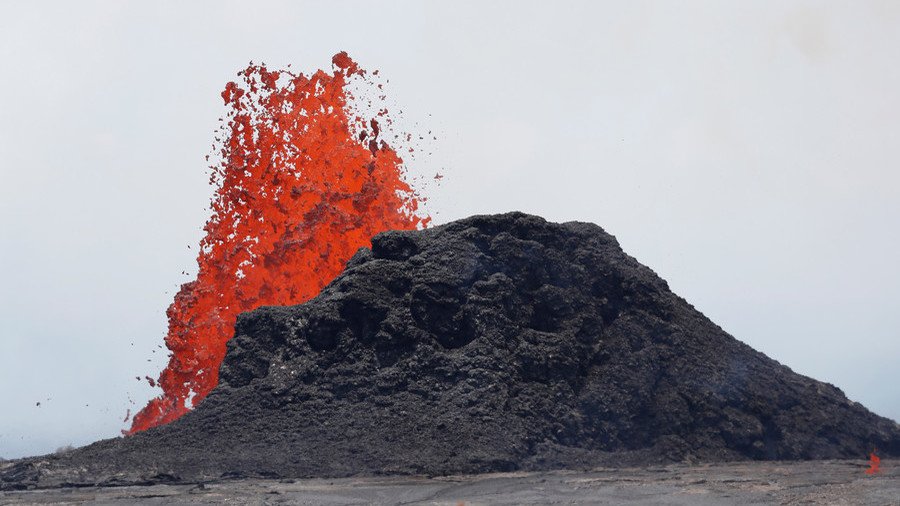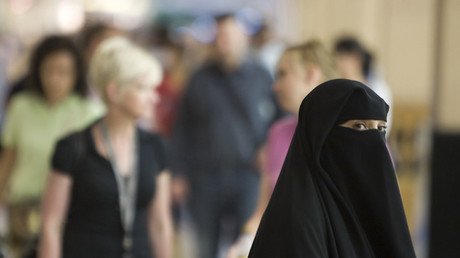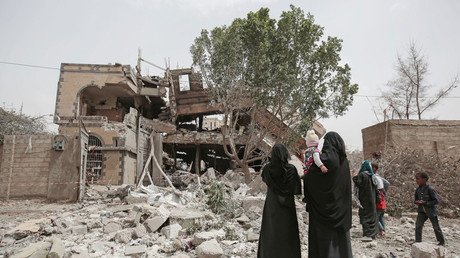Gems, toxic gas & lava eggs: The strangest things to emerge from Kilauea eruption

From rare green gems to a corrosive haze, Hawaii’s Kilauea volcano has thrown up some bizarre phenomena during its six-week eruption.
Kilauea, located on Hawaii’s Big Island, is one of the world’s most active volcanoes. Its current period of explosive activity has forced thousands of people to evacuate, with at least 75 homes destroyed by the flowing lava. Here are some of the strangest things to come from the latest – and ongoing – eruption.
Green gems galore / It’s raining gems
A surprising upside to the extensive eruption is the emergence of countless green gemstones. The small green gems – olivines – have been dislodged from the volcanic rock and are raining down on locals, who have been collecting them from the streets and beaches.
Some olivines that popped out of an a'a flow. Kilauea's little gems. #hawaii#kilauea#olivine#lovevolcanoeshttps://t.co/1X2ACcWu7npic.twitter.com/8UaA1IrKEd
— GEOetc (@GEOetc2) June 10, 2018
Also known as Peridot in its magnesium-rich form, olivine is used to make jewellery and a carat can be worth over $500.
Alien-like lava eggs
Kilauea’s eruption has resulted in the emergence of a series of bizarre, alien-looking structures known as lava eggs. The ‘eggs’ look like massive burning balls of lava.
The strange spherical structures are formed after the volcano’s eruption flings large boulders into the air, which create craters in the earth when they land, triggering more lava to emerge.
Toxic ‘laze’ and other terrifying weather conditions
‘Laze,’ or lava haze, is a hydrochloric acid mist which is created when hot lava hits seawater. With Kilauea spewing rivers of lava into the sea, officials have warned of the dangers of laze to eruption onlookers.
The acid fumes look like a cloud, and contain hydrochloric acid gas (HCI) steam and glass particles, making it a very dangerous form of mist. What’s even more disturbing than the glass particles is the fact that the acid in the mist is as corrosive as diluted battery acid. It can irritate the eyes, lungs, and skin.
Laze isn’t the only terrifying form of weather created by Kilauea’s eruption, though. The volcano has also created acid rain and ‘vog,’ or volcanic smog, containing a potent mixture of sulfur dioxide and acid particles.
Pele’s killer hair
Kilauea’s long-running eruption has seen parts of the island covered in what looks like clumps of golden hair.

However, the hair is a lot more sinister than it appears. The strands are actually very thin fibers of glass, measuring one micron (one thousandth of a millimeter). They form when gas bubbles in the lava burst at the surface. The bubble’s ‘skin’ is thrown outwards, and can stretch into the hair-like strands.
The strands have sharp ends and can be swept into water collection tanks where they can be accidentally consumed by locals. Animals can also inadvertently consume the strands of glass.
And, just to be clear, the hair got its name from the Hawaiian goddess of fire and volcanoes, not the famous footballer.
Think your friends would be interested? Share this story!














